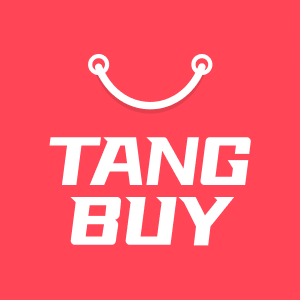18 Dropshipping Marketing Tactics Proven to Bring in Sales

Ready to boost your sales? You can use 18 proven Dropshipping Marketing tactics that actually work. Many shop owners like you struggle with high marketing costs and find it hard to stand out. Over 63% say marketing is their biggest hurdle. You might also face tough competition, tricky SEO, and the challenge of building your brand.
Here are some common struggles:
High marketing costs in a crowded market
Standing out from similar shops and products
Making your site show up in search results
Using social media and email to connect with buyers
Pick the tactics that fit your business best and see what works for you.
Key Takeaways
Make your website faster by making images smaller. Pick a fast hosting service. This keeps customers interested and stops them from leaving quickly.
Make sure your site works well on phones. Use themes that change to fit any screen. Test your site on many devices. More people shop on their phones now.
Use easy menus and a clear search bar. This helps visitors find what they want fast.
Write your own product descriptions. Use good photos or videos. This helps people trust you and makes your site show up better in searches.
Share blogs, guides, and videos. These answer customer questions. They help your site show up in searches. They also show how your products work.
Use Instagram and TikTok for social media. Run contests and share posts from users. Work with small influencers. This gets more people to notice and buy your products.
Use Facebook and Google Ads together. Target the right people and show ads again to those who visited before. Watch your spending. This helps you reach buyers and get more money back.
Collect emails and phone numbers. Send special messages and reminders about left carts. Give special deals. This brings back sales and keeps customers coming back.

Website Optimisation
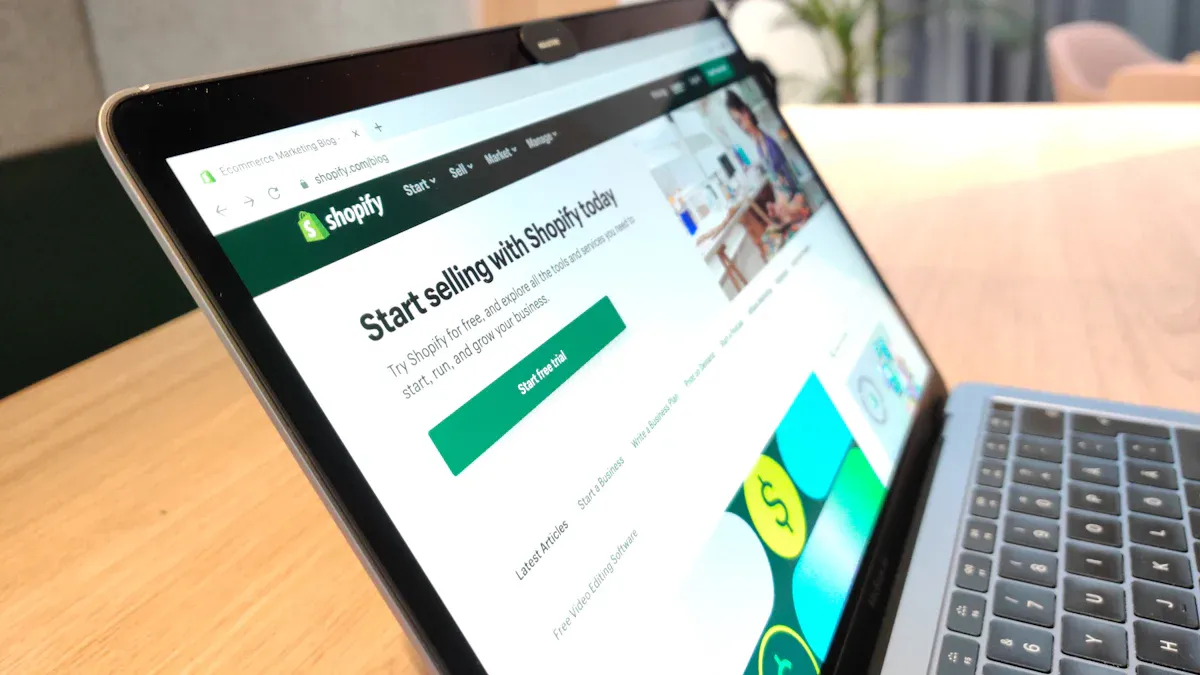
You want your dropshipping shop to be quick and simple for everyone. A good website helps customers and can help you sell more. Let’s look at some ways to make your website better.
Site Speed
If your website is slow, people might leave. Most people want pages to load fast. If your site takes too long, they may not see your products. Here are some facts:
Ecommerce sites that load in 1 second get more sales than those that take 5 seconds.
82% of shoppers say slow sites make them less likely to buy.
Sites that load in 1 second have a bounce rate as low as 7%.
73% of mobile users find slow sites, which makes them buy less.
Image Compression
Big images can make your site slow. You can use free tools like TinyPNG or ShortPixel to make images smaller. Smaller images load faster. This keeps your customers happy and interested.
Hosting Choice
Your hosting provider is important. Pick a host that is reliable and fast. Cloud hosting or managed WordPress hosting can give you better speed. If your shop gets bigger, you can upgrade your plan for more visitors.
Mobile Design

Most people now shop on their phones. If your site does not look good on mobile, you will lose sales. Here is how much shopping happens on mobile:
Metric/Group | Mobile Usage Percentage | Notes |
|---|---|---|
Overall e-commerce | 58% | Mobile devices make up 58% of online shopping traffic worldwide. |
Millennials | 74% | 74% use smartphones for shopping at least half the time; 58% use them most of the time. |
Gen Z | 68% | 68% use smartphones for shopping at least half the time; 54% use them most of the time. |
Gen X | 60% | 60% use smartphones for shopping at least half the time; 47% use them most of the time. |
Boomers | N/A | Boomers do not like mobile shopping; 55% use a laptop or PC half the time or more. |
Mobile engagement | 73% | 73% of online shopping is on mobile, only 25% is on desktop. |
Mobile conversion rate | 2.9% | This is lower than the desktop conversion rate of 4.8%. |
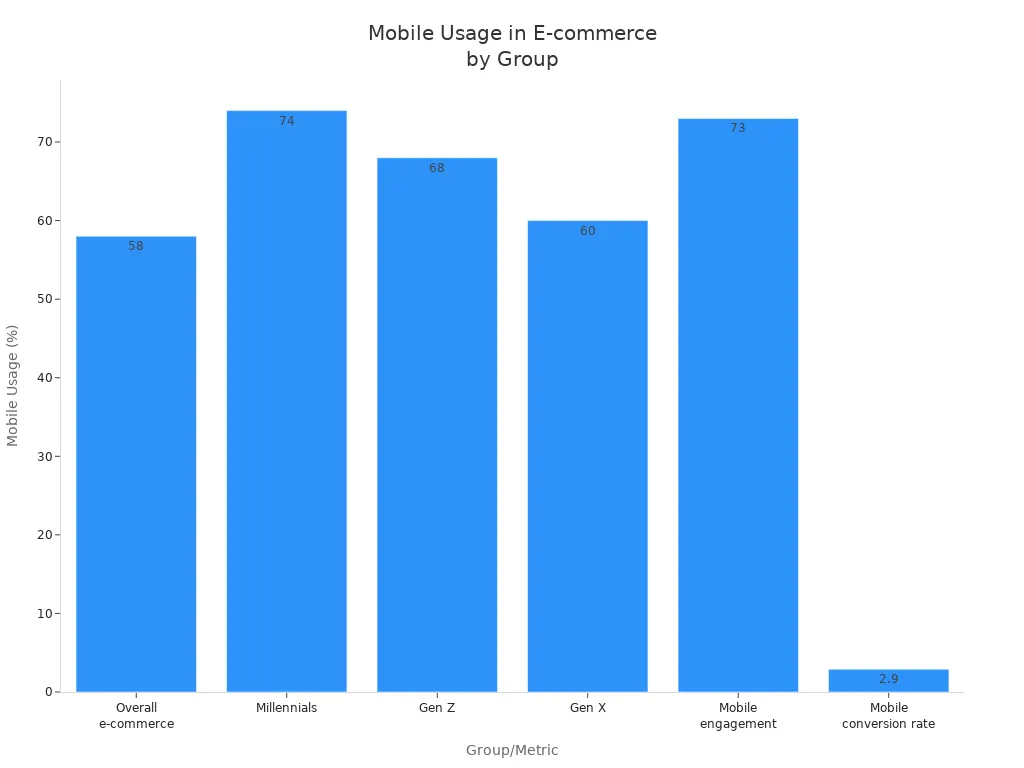
Responsive Themes
Choose a theme that works on any device. Responsive themes make your shop look good on phones, tablets, and computers. Most e-commerce platforms have these themes.
Device Testing
Always check your site on different devices. Try it on your phone, tablet, and laptop. Make sure buttons are easy to tap and words are easy to read.
Navigation
Good navigation helps people find things quickly. If menus are confusing, people may leave. Here is why navigation is important:
Easy navigation keeps people on your site and makes them happy.
Clear menus help customers find and buy things.
A design that looks the same everywhere builds trust.
Menus that work on mobile and a good search bar make shopping easier.
Update your navigation often to keep it working well.
Simple Menus
Keep menus short and easy to understand. Use categories that are clear. Do not give too many choices.
Search Bar
Put a search bar where people can see it. Shoppers who know what they want can find it fast. A good search bar can help turn visitors into buyers.
Product Pages
Your product pages are where shoppers decide if they want to buy from you. If you get these pages right, you can turn more visitors into happy customers. Let’s break down what makes a great product page and how you can make yours stand out.
Custom Descriptions
You might feel tempted to copy product descriptions from your supplier. Don’t do it. Unique descriptions help your shop look professional and trustworthy. They also help your site show up in search results.
Start with a headline that grabs attention. Use words that make people want to read more.
Answer common questions about the product. Think about what your customers want to know before they buy.
Highlight the best features and benefits. Tell shoppers how your product solves their problems or makes life easier.
Use simple language. Avoid jargon. Make sure anyone can understand what you’re selling.
Add reasons why someone should buy from you. Maybe you offer fast shipping, a money-back guarantee, or special deals.
Keep your descriptions short and easy to scan. Use bullet points for key details.
Tip: Write as if you’re talking to a friend. Imagine you’re explaining why you love the product.
A good product description does more than list features. It tells a story and helps shoppers picture themselves using the item. This builds trust and makes people more likely to buy.
Unique Photos

Photos are the first thing people notice on your product page. High-quality images can make your shop look more reliable and help customers trust you.
Show your product from different angles. Include close-ups and wide shots.
Use photos that show the product in use. Help shoppers imagine how it fits into their lives.
If possible, add a short video. Videos can show how the product works and answer questions quickly.
Make sure your images are clear and bright. Blurry or dark photos can turn people away.
Let customers zoom in on images. This helps them see details and feel confident about their choice.
Note: Place your best images, product name, price, and “Add to Basket” button at the top of the page. Shoppers should see these right away.
You can also add trust badges, clear shipping info, and a simple returns policy. These extras reduce risk and make people feel safe buying from you.
A great product page combines strong words and stunning visuals. When you focus on both, you help shoppers feel good about clicking “Buy Now”.
Content Strategy
A strong content strategy helps you attract the right shoppers and keep them coming back. You do not need to be a professional writer or filmmaker. You just need to answer questions, share helpful guides, and show your products in action. Let’s break down how you can do this.
Blogging
Blogging gives your shop a voice. You can use it to help buyers, share tips, and boost your search rankings.
Answer Buyer Questions
Think about what your customers ask most. Write blog posts that answer these questions. For example, if you sell fitness gear, you might write, “How do I choose the right resistance band?” This builds trust and shows you care about helping.
Tip: Use a friendly tone. Imagine you are chatting with a friend who wants advice.
SEO Posts

Search engines love fresh content. Write posts that use keywords your buyers search for. This helps your shop appear higher in Google results. You can use tools like Ubersuggest or Google Keyword Planner to find good topics.
Product Guides
Guides help shoppers understand your products. They also show that you know your stuff.
How-To Content
Show people how to use your products. Step-by-step guides or simple tutorials work well. Add photos or diagrams to make things clear. If you sell kitchen gadgets, you could write, “How to use a spiraliser for healthy meals.”
Comparisons
Buyers often want to know which product suits them best. Write comparison posts. For example, “Resistance Bands vs. Dumbbells: Which Is Better for Home Workouts?” This helps people decide and makes your shop look helpful.
Video Content
Videos grab attention fast. They help shoppers see your products in action. You do not need fancy equipment. Your phone and good lighting are enough.
YouTube Channel
Start a YouTube channel for your shop. Post short videos that answer questions, show products, or share tips. YouTube and TikTok both offer huge organic reach. Many shoppers discover new brands through these platforms.
Product Demos
Show your products in use. A quick demo can answer questions and build trust. Videos can boost your conversion rates by up to 80%. Most shoppers say they feel more confident buying after watching a video. Videos also help people picture themselves using your products, which makes them more likely to buy.
Note: Keep your videos short and clear. Focus on showing real benefits. Use storytelling to connect with your viewers.
You do not need to be perfect. Just be helpful and real. Over time, your content will bring in more visitors and sales.
Social Media
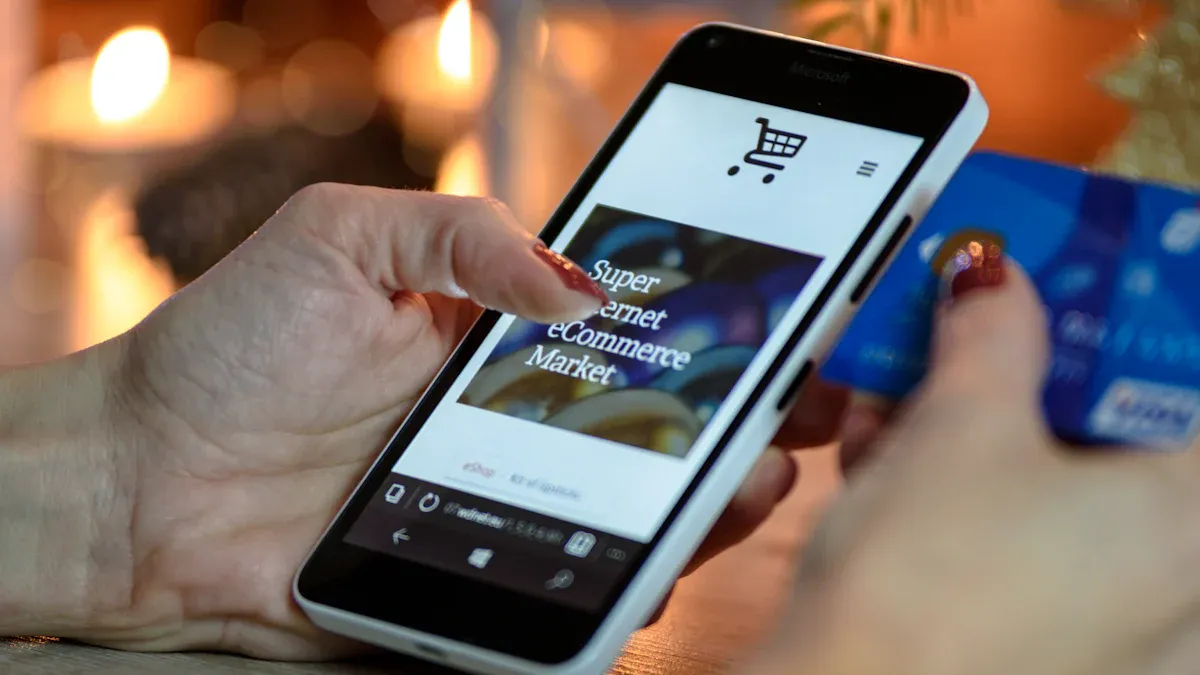
Social media can turn your dropshipping shop into a brand people remember. You can reach new customers, build trust, and show off your products in fun ways. Let’s look at how you can use the best platforms, boost engagement, and work with influencers to grow your sales.
Platforms
You want to be where your customers spend their time. Two platforms stand out for dropshipping: Instagram and TikTok.
Instagram works well for dropshipping because it’s all about visuals. You can post photos, videos, and stories to show your products in action. Shoppable posts let people buy straight from your feed. Instagram Reels and Stories help you reach more people and keep your brand fresh in their minds.
Instagram gives you strong ROI for dropshipping marketing.
Videos on Instagram get shared much more than text or images.
You can use hashtags and captions to boost your reach.
TikTok
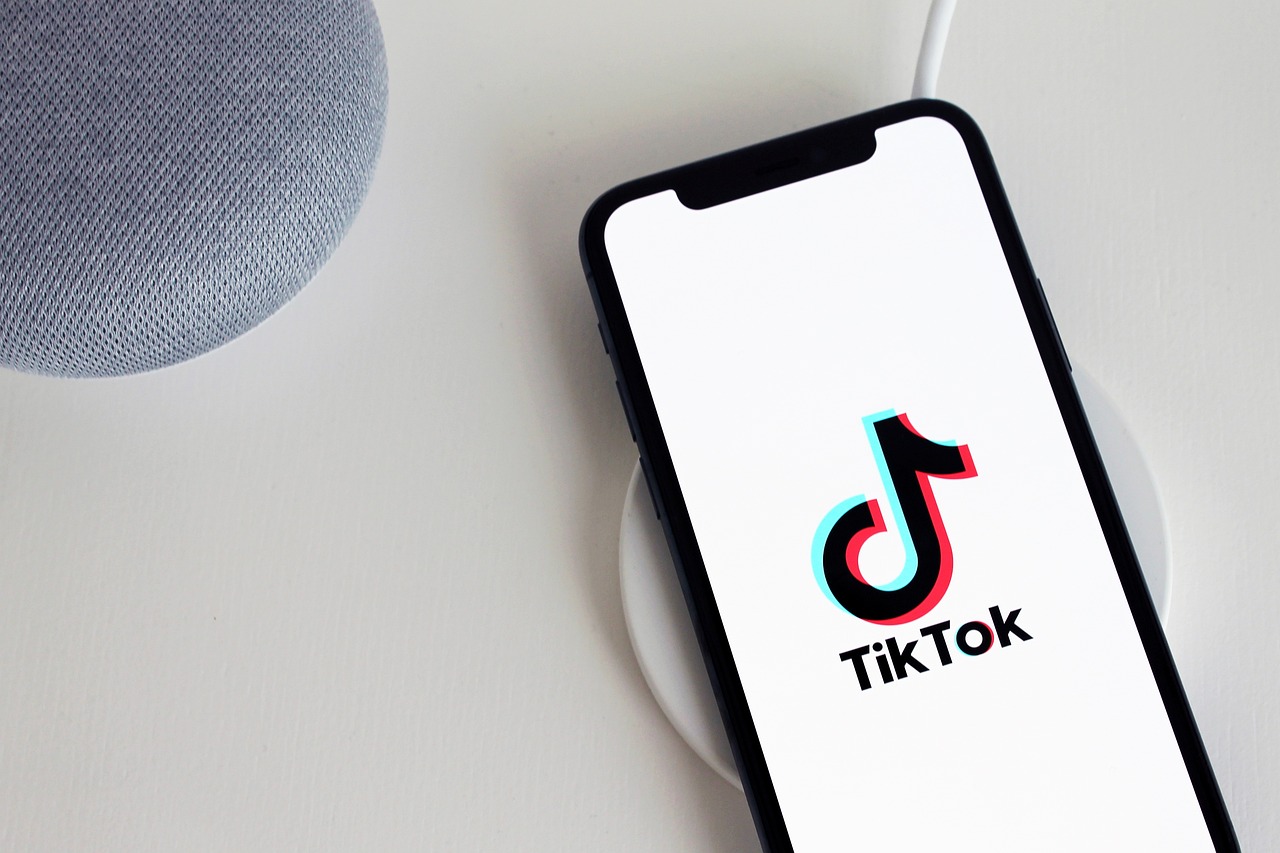
TikTok is growing fast. It’s perfect for short, catchy videos that grab attention. Many dropshipping brands use TikTok to go viral with product demos, challenges, or trends.
TikTok offers the highest ROI for dropshipping ads right now.
Influencer collaborations on TikTok can bring in lots of new buyers.
TikTok videos get shared 1200% more than text or images.
Tip: Try posting product demos or behind-the-scenes clips. Keep videos short and fun.
Engagement
You want people to interact with your brand, not just scroll past. Here are some ways to get your followers talking and sharing.
Contests
Contests and giveaways create excitement. You can ask people to tag friends, share your post, or use a hashtag for a chance to win. This spreads your brand to new people and builds a buzz.
User Content
Encourage your customers to share photos or videos using your products. You can repost their content on your page. This builds trust and shows real people love your shop.
Use branded hashtags to collect user content.
Feature customer photos in your stories or feed.
Note: User-generated content feels more real and helps others trust your brand.
Influencers

Working with influencers can help you reach new audiences and build trust fast.
Micro-Influencers
Micro-influencers have smaller but loyal followings. They often get higher engagement because their fans trust them. You can send them free products or offer commissions for each sale.
Benefit | Why It Matters |
|---|---|
High Engagement | Micro-influencers connect with niche audiences. |
Authentic Promotion | Their followers trust their honest opinions. |
Cost-Effective | They charge less than big celebrities. |
Sponsored Posts
You can pay influencers to create posts about your products. Make sure you pick influencers who match your brand and values. Track results with special links or discount codes to see what works best.
Remember: Influencer marketing boosts brand awareness and trust. People are more likely to buy from brands they see recommended by someone they follow.
Paid Advertising
Paid advertising can help you reach new customers fast. You do not have to wait for organic traffic. You can show your products to people who are ready to buy. Let’s look at how you can use Facebook Ads, Google Ads, and smart ad optimisation to boost your dropshipping sales.
Facebook Ads
Facebook Ads let you target people based on their interests, age, and behaviour. You can reach a huge audience and test different ideas quickly.
Targeting
You want your ads to reach the right people. Facebook gives you many options. You can use broad targeting to find new customers or lookalike audiences to reach people similar to your best buyers. Here’s how different strategies perform in dropshipping:
Facebook Ads Optimisation Strategy | Average ROAS (Return on Ad Spend) |
|---|---|
Ad Set Budget Optimisation (Prospecting) | 0.94 (94%) |
Campaign Budget Optimisation | 0.81 (81%) |
Broad Targeting | 1.13 (113%) |
Lookalike Targeting | 0.76 (76%) |
Most dropshipping shops see a ROAS between 0.8 and 1.13. This is lower than the average ecommerce ROAS, which usually sits between 2:1 and 5:1. Dropshipping is more competitive, so you need to watch your results closely.
Retargeting
Not everyone buys the first time they visit your shop. Retargeting helps you remind visitors about your products. You can show ads to people who viewed your site but didn’t buy. This keeps your brand in their mind and often brings them back to finish their purchase.
Tip: Use Facebook Pixel to track visitors and create retargeting audiences. This tool helps you follow up with people who already know your shop.
Google Ads

Google Ads put your products in front of people who are searching for them. These shoppers often have high intent and are ready to buy.
Shopping Campaigns
Google Shopping campaigns work well for dropshipping. They show your products at the top of search results with images and prices. Here’s how Google Shopping compares to Facebook Ads:
Aspect | Google Shopping Campaigns | Facebook Ads |
|---|---|---|
Cost per Click (CPC) | Higher ($1.00 - $2.00) | Lower ($0.50 - $1.00) |
Buyer Intent | High-intent buyers actively searching | Broader audience, lower intent |
Conversion Rate | Higher (up to 25% in some cases) | Needs nurturing, retargeting helps |
Strategic Strength | Strong ROAS from intent-driven traffic | Good for brand awareness and retargeting |
You pay more per click on Google, but you often get buyers who are ready to purchase. Many dropshipping shops use both platforms together for the best results.
Bidding
Start with a small daily budget. Watch your results and adjust your bids as you learn what works. Google’s automated bidding can help you get more sales for your money.
Ad Optimisation
You want your ads to work hard for you. Good optimisation means better results and less wasted money.
Simple Creatives
Keep your ads clear and eye-catching. Use strong images or short videos. Show the product in use. Write simple, benefit-focused copy. Test different offers, like “Free Shipping” or “20% Off”, to see what gets more clicks.
Test one thing at a time (like the image or the headline).
Pause ads that do not perform well after a day or two.
Use video and user-generated content for higher engagement.
Budget Control
Start small. Spend £5–£20 per day while testing. Use data to decide which ads to scale up. Track key numbers like click-through rate and conversion rate. Adjust your budget to focus on the ads that bring in the most sales.
Note: Combining Facebook and Google Ads, using retargeting, and testing your creatives will help you get the best results from your paid advertising.
Email & SMS
Email and SMS marketing help you reach your customers where they spend most of their time—on their phones and in their inboxes. These tools let you build relationships, recover lost sales, and keep your shop top of mind. Let’s break down how you can use them to boost your dropshipping sales.
List Building
You need a strong list of contacts to get the most from email and SMS marketing. Start by collecting emails and phone numbers from visitors and customers.
Pop-Ups
Pop-ups grab attention and help you grow your list quickly. You can offer a discount or free shipping in exchange for an email address. Make your pop-up simple and easy to close. Try not to annoy visitors—show it after a few seconds or when someone is about to leave your site.
Lead Magnets
Lead magnets give people a reason to share their details. You might offer a free guide, a special deal, or early access to new products. The more valuable your offer, the more likely people will sign up. Keep your sign-up form short—just ask for what you need.
Campaigns
Once you have a list, you can send targeted campaigns that drive sales and build loyalty.
Abandoned Cart
Most shoppers leave items in their basket before buying. In fact, over 70% of people abandon their carts at checkout. You can win back many of these sales with abandoned cart emails. These messages remind shoppers about their forgotten items and often include a special offer or a gentle nudge.
Follow up with a second email the next day, maybe with a discount.
Add a third email that creates urgency, like “Items are selling out!”
Personalise your emails with the customer’s name and the products they left behind. Show reviews or ratings to build trust. Abandoned cart emails can recover 10% to 30% of lost sales, making them one of the most effective tools for dropshipping shops.
Product Launches
When you launch a new product, let your subscribers know first. Send a sneak peek or an exclusive offer. This makes your customers feel special and can create excitement around your brand. Use clear subject lines and strong images to boost your open rates. Dropshipping email campaigns usually see open rates between 15% and 25%, so a catchy subject line can make a big difference.
SMS Marketing
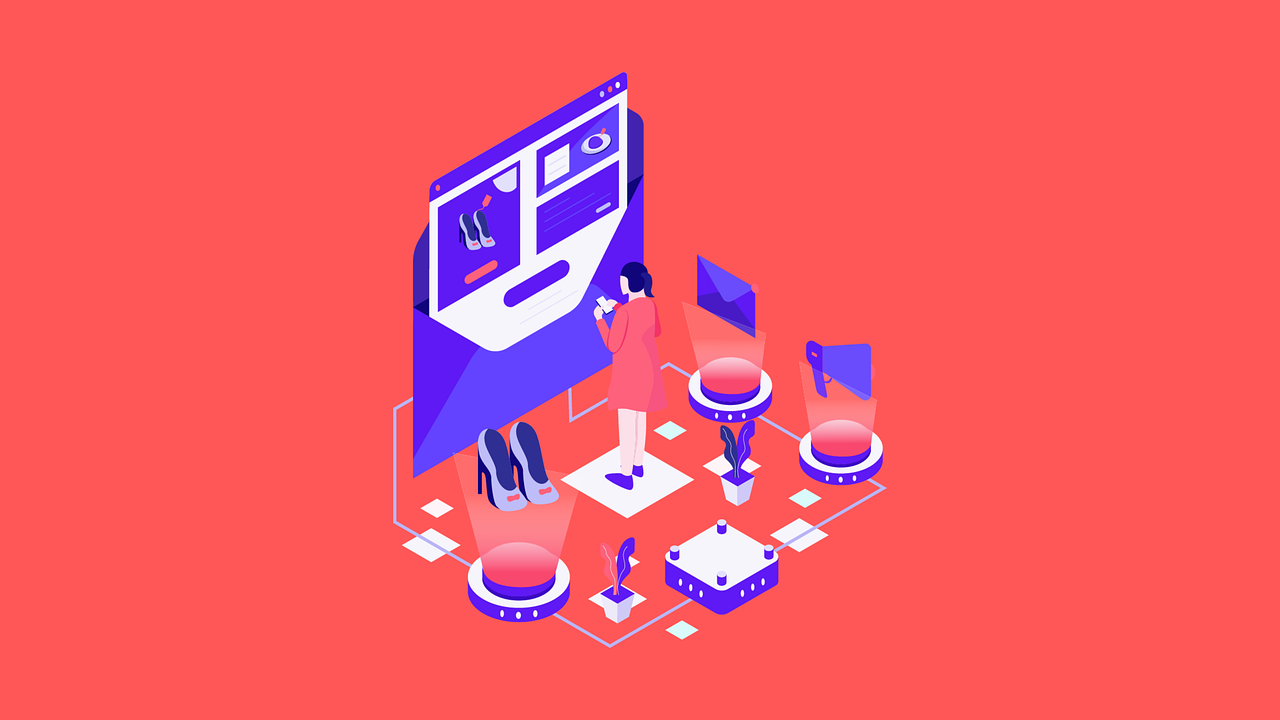
SMS messages reach your customers instantly. People check their phones all day, so your offers get seen fast.
Offers
Send exclusive deals or flash sales by text. Keep your message short and direct. SMS marketing in e-commerce has an average conversion rate between 11% and 20%. This means many people who get your texts will click and buy.
Industry | Average SMS Conversion Rate |
|---|---|
E-commerce/Retail | 11% - 20% |
Reminders
Use SMS to remind customers about abandoned carts, order updates, or upcoming sales. Abandoned cart SMS campaigns work even better, with conversion rates ranging from 17.4% to 39.4%. These reminders help you recover more sales and keep your customers engaged.
Campaign Type | Conversion Rate Range |
|---|---|
Abandoned Cart Messages | 24.6% - 39.4% |
Abandoned Checkout | 17.4% - 31.6% |
Tip: Always get permission before sending emails or texts. Respect your customers’ privacy and make it easy to unsubscribe.
With the right approach, email and SMS can turn visitors into loyal buyers and help your dropshipping shop grow faster.
Dropshipping Marketing Essentials
Building a strong foundation is key if you want your dropshipping shop to stand out. Let’s look at the essentials that make your Dropshipping Marketing work for the long term.
Brand Identity
Your brand is more than just a logo. It’s how people see and remember your shop. A strong brand identity helps you build trust and keeps customers coming back.
Consistent Messaging
You need to sound the same everywhere—on your website, in emails, and on social media. When your message is clear and steady, people know what to expect from you. This makes your shop look reliable and professional. Over time, customers start to trust you more, even if you don’t handle the products yourself.
Visuals
Use the same colours, fonts, and style across all your platforms. Good visuals make your shop look polished and help shoppers remember you. When your website, ads, and posts all match, you look more trustworthy. This trust leads to more repeat buyers and long-term fans.
Tip: Share customer reviews and photos. Real stories and images show that people love your shop, which builds even more trust.
Niche Focus
Trying to sell everything to everyone rarely works in Dropshipping Marketing. Focusing on a specific niche helps you reach the right people and makes your marketing much easier.
Target Audience
Pick a group of customers who share the same interests or needs. When you know your audience, you can create ads and posts that speak directly to them. Niche marketing lets you send messages that feel personal. This approach often gets better results, like higher click-through rates and more sales.
Unique Value
Show what makes your shop different. Maybe you offer special products, expert advice, or fast support. When you focus on a niche, you become an expert in that area. Customers trust you more and are more likely to buy again. Suppliers also prefer working with shops that know their market well.
Customer Funnel
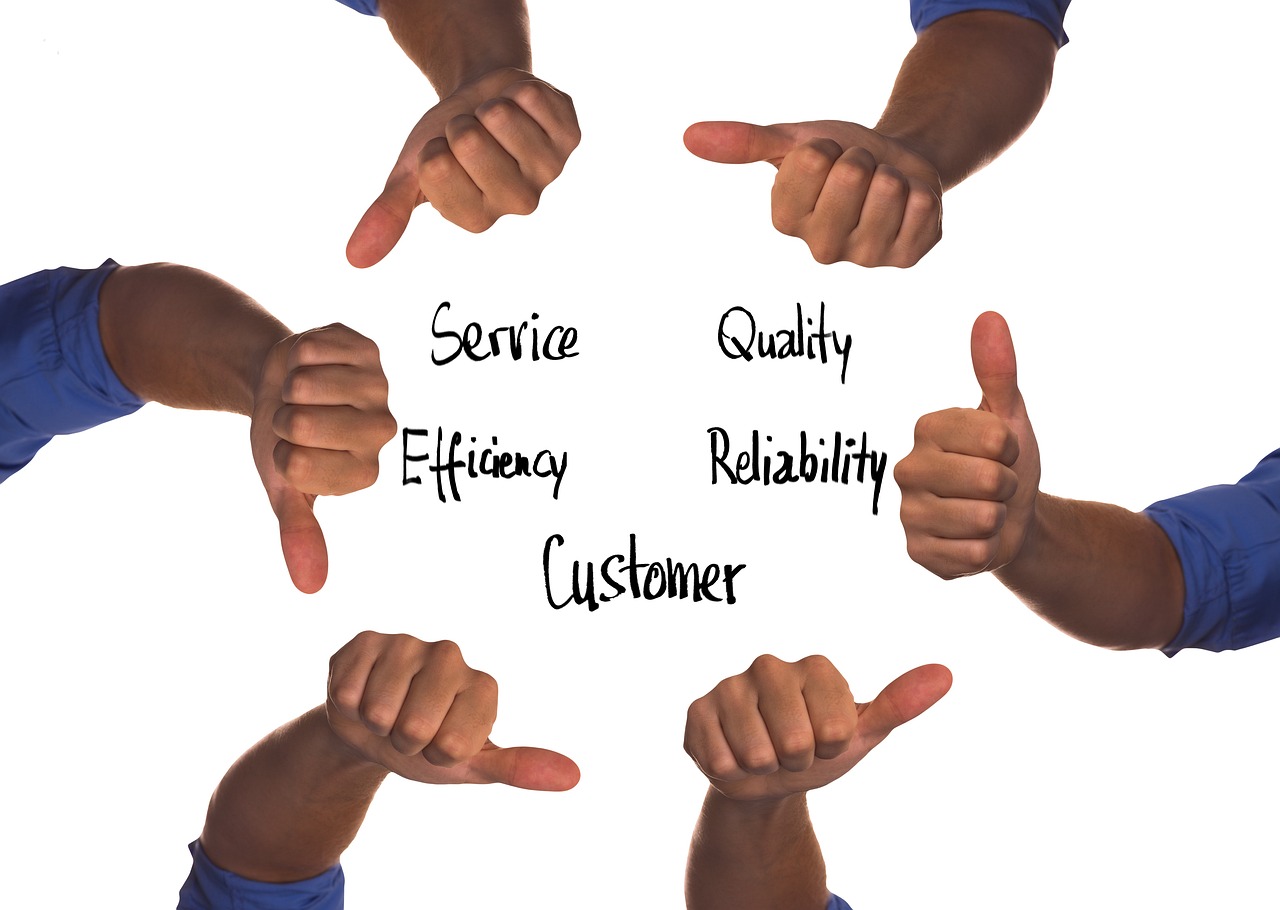
Understanding your customer funnel is a big part of Dropshipping Marketing. The funnel is the path shoppers take from first hearing about you to making a purchase.
Awareness
At the top of the funnel, you want to get noticed. Use SEO, social media, and ads to attract visitors. Share helpful content and work with influencers to reach new people.
Conversion
Once shoppers know you, help them buy. Make your website easy to use. Offer clear product info, reviews, and live chat. Use special deals and reminders to turn visitors into buyers. After the sale, keep in touch with rewards and offers to build loyalty.
Remember: Mapping your funnel helps you spot where shoppers drop off. Fixing small problems at each step can boost your sales and make your Dropshipping Marketing much more effective.
Conversion Boosters
You want more people to buy from your shop. Small changes can help a lot. Here are three ways to get more sales: trust badges, social proof, and upsells or bundles.
Trust Badges
Trust badges are small pictures or labels. They show your shop is safe and honest. These badges help shoppers feel safe when they buy.
Secure Payments
Adding security badges shows payments are safe. People worry about scams and stolen details. Badges like SSL certificates or PayPal logos help stop these worries. These badges tell shoppers their details are safe.
Trust badges can make more people finish buying, up to 42% more.
They help people feel sure and finish their order.
Put badges near the “Buy Now” button or on the checkout page.
Tip: Use badges from big, trusted companies. Shoppers trust names they know.
Money-Back Guarantee
A money-back badge tells buyers you believe in your products. This badge makes buying less risky. If people know they can get their money back, they feel safe to try your shop.
Money-back badges help stop people leaving their basket.
They show you care about happy customers.
Use this badge with clear refund rules for more trust.
Social Proof
People trust other shoppers more than ads. Social proof shows real people like your shop.
Customer Reviews
Customer reviews and ratings help new buyers feel sure. When shoppers see good reviews, they trust your products. Honest reviews answer questions and clear up doubts.
Reviews make your shop look honest.
They help build your shop’s good name.
Good reviews can make people want to buy quickly.
User Content
Photos and videos from real buyers are strong proof. They show your products in real life. Ask buyers to share their photos on social media or your website.
User content shows your shop is real and trusted.
It helps visitors feel close to your shop.
High order numbers and best-seller lists also show trust.
Note: Tools like AliDropship let you add real reviews, even if your shop is new.
Upsells & Bundles
You can get more money from each customer by offering more.
Product Bundles
Bundles put matching products together for a special price. Shoppers like deals. You help them save money and find new things.
Bundle Example | What You Offer |
|---|---|
Fitness Starter Pack | Resistance bands + mat |
Skincare Set | Cleanser + moisturiser |
Cross-Sells
Cross-sells suggest extra things at checkout. For example, if someone buys trainers, you can offer socks or shoe cleaner. These ideas feel helpful, not pushy.
Cross-sells help you sell more without spending more on ads.
They make shopping easier for your customers.
Try adding bundles and cross-sells to your product pages. You will get more sales and happier shoppers.
Customer Retention
Getting customers to come back is very important. If people return, your shop can make more money. Loyal customers trust you and help your business grow. Let’s see how you can make shoppers want to buy again.
Loyalty Programmes
Loyalty programmes give rewards to people who shop with you. These rewards make customers feel special and want to shop more.

Points
You can give points for every time someone buys something. Customers can use points for discounts or free gifts. This idea really works. People who come back spend 67% more than new shoppers. If you keep just 5% more customers, your profits can go up by 95%. That is a big change for your shop.
More shops now use points, levels, and games to keep people interested. When you mix rewards with fast shipping and good products, people feel close to your shop. This trust makes them return.
Referrals
Referral programmes let happy customers tell friends about your shop. You can give rewards when they invite others to buy. This helps you get new buyers without spending much on ads. Referrals also bring in loyal shoppers who already trust your shop.
Tip: Make sharing easy. Give both the person who shares and the new customer a reward for best results.
Personalisation
Personal touches help customers feel important. If you show you know what they like, they will want to come back.
Recommendations
Suggest products based on what people have bought or looked at before. This saves time and helps shoppers find what they want. Tools can send special emails or show product ideas on your site. This makes more people buy and helps them shop quickly.
Birthday Offers
Everyone likes a birthday treat. Send a special discount or free gift on their birthday. This small thing makes people remember your shop. Personal offers show you care, which is important when there are many shops.
Customer Service
Good service turns new buyers into regular fans. Fast and friendly help is very important.
Fast Support
Answer questions or problems quickly. Use live chat, email, or social media so people can reach you. Quick and kind replies can fix a bad situation. 89% of people say they will buy again if you solve their problems fast.
Easy Returns
Make returns simple and not stressful. Give prepaid labels and clear steps. If people know they can return things easily, they feel safe to buy. Easy returns build trust and make people want to shop again.
Note: Good service, clear messages, and personal touches help you build a shop people love. This is how you make your dropshipping shop last.
Advanced Tactics
Want to take your dropshipping shop to the next level? These advanced tactics help you stand out, keep customers happy, and run your business smoothly. Let’s dive in.
Omnichannel
You can reach more customers and keep them coming back by showing up everywhere they spend time online.
Forums
Forums are great places to meet people who care about your niche. You can join discussions, answer questions, and share your knowledge. When you help others, you build trust and get your shop noticed. Try to be helpful, not pushy. People remember brands that give good advice.
Community Groups
Community groups on Facebook, Reddit, or WhatsApp let you connect with your audience in a friendly way. You can share tips, run polls, or ask for feedback. This makes your brand feel real and personal. When you join these groups, you learn what your customers want and spot trends early.
Omnichannel marketing means you meet customers on forums, social media, email, and more. Shops using this approach see a 91% higher customer retention rate. You also get better data, can personalise your messages, and make shoppers more likely to buy again. Big brands like Nike and Sephora use omnichannel strategies to keep customers loyal and happy.
You reach customers on their favourite platforms.
You collect better data for smarter marketing.
You boost repeat purchases and loyalty.
You can tailor your approach for any budget.
Competitor Analysis
You can learn a lot by watching what other shops do.
Learn from Others
Check out your competitors’ websites, social media, and ads. Subscribe to their newsletters. Use tools like SEMrush or Ahrefs to see which keywords they target. Watch how they talk to customers and what offers they use.
You spot winning marketing campaigns and social media tricks.
You find new channels to promote your shop.
You see which products and ads work best.
Refine Tactics
Take what you learn and make it your own. If you see a great idea, try it in your shop. Use a SWOT analysis to spot your competitors’ strengths and weaknesses. This helps you stand out and improve your own marketing.
Tip: Keep testing and tweaking your tactics. The best shops always look for ways to get better.
Supplier Management
Managing your suppliers well keeps your shop running smoothly and your customers happy.
Multiple Suppliers
Working with more than one supplier means you don’t have to worry if one runs out of stock or has delays. You get more reliable deliveries and can offer a wider range of products. Automation tools help you keep track of orders and inventory.
You avoid stock shortages and shipping delays.
You get better prices and more flexibility.
You can handle more orders without stress.
Inventory Overlap
Sometimes, different suppliers offer the same product. This gives you a backup if one supplier has problems. Make sure you check product quality and keep your listings up to date. Let customers know if their order might come in more than one package.
Managing multiple suppliers takes effort, but it pays off. You reduce risks, keep customers happy, and grow your shop with confidence.
You now have 18 Dropshipping Marketing tactics that can help you boost sales and build a stronger shop. Try a few ideas first and see what works for you. As you grow, add more tactics and keep testing new things. Every shop is different, so experiment and find your best path. Got questions or tips? Share your thoughts in the comments below. Your experience can help others too!
FAQ
What is dropshipping marketing?
Dropshipping marketing means promoting your online shop and products to get more sales. You use tools like social media, ads, and email to reach new customers and keep old ones coming back.
How much money do I need to start dropshipping marketing?
You can start with as little as £50–£200 for basic ads and tools. If you want faster results, you might spend more. Start small, test what works, and increase your budget as you grow.
Which social media platform works best for dropshipping?
Instagram and TikTok work best for most dropshipping shops. Both platforms help you show off products with photos and videos. You can reach lots of people and build a loyal following.
How do I get my first sale?
Share your shop with friends and family. Post on social media. Try a small ad campaign. Offer a discount for first-time buyers. Make sure your website looks trustworthy and easy to use.
Do I need to pay for advertising?
You do not have to pay, but ads help you reach more people quickly. Free methods like posting on social media or writing blog posts also work. Many shops use both paid and free tactics.
How can I make my shop stand out?
Pick a clear niche. Use unique product photos and custom descriptions. Share real customer reviews. Offer fast support and easy returns. Show your brand’s personality in everything you do.
What if my supplier runs out of stock?
Work with more than one supplier. This gives you backup if one runs out. Always check stock levels before you promote a product. Let customers know if there might be a delay.
Can I do dropshipping marketing without experience?
Yes, you can! Start with simple tactics like social media posts and email campaigns. Learn as you go. Many tools and guides online can help you improve your skills.

TangBuy: A Smarter Way to Dropship in 2025
If you're looking to stay competitive with dropshipping in 2025, speed and trend-awareness are key. TangBuy helps you stay ahead with real-time product trends, fast fulfilment, and factory-direct sourcing. With over 1 million ready-to-ship items, 24-hour order processing, and seamless Shopify integration, TangBuy makes it easier to test, scale, and succeed in today's fast-moving eCommerce landscape.
See Also
Five Effective Ways To Find Trending Items For Your Store
Essential Advice For Achieving eBay Dropshipping Success In 2025
Profitable Dropshipping Concepts To Earn Income Throughout 2025
